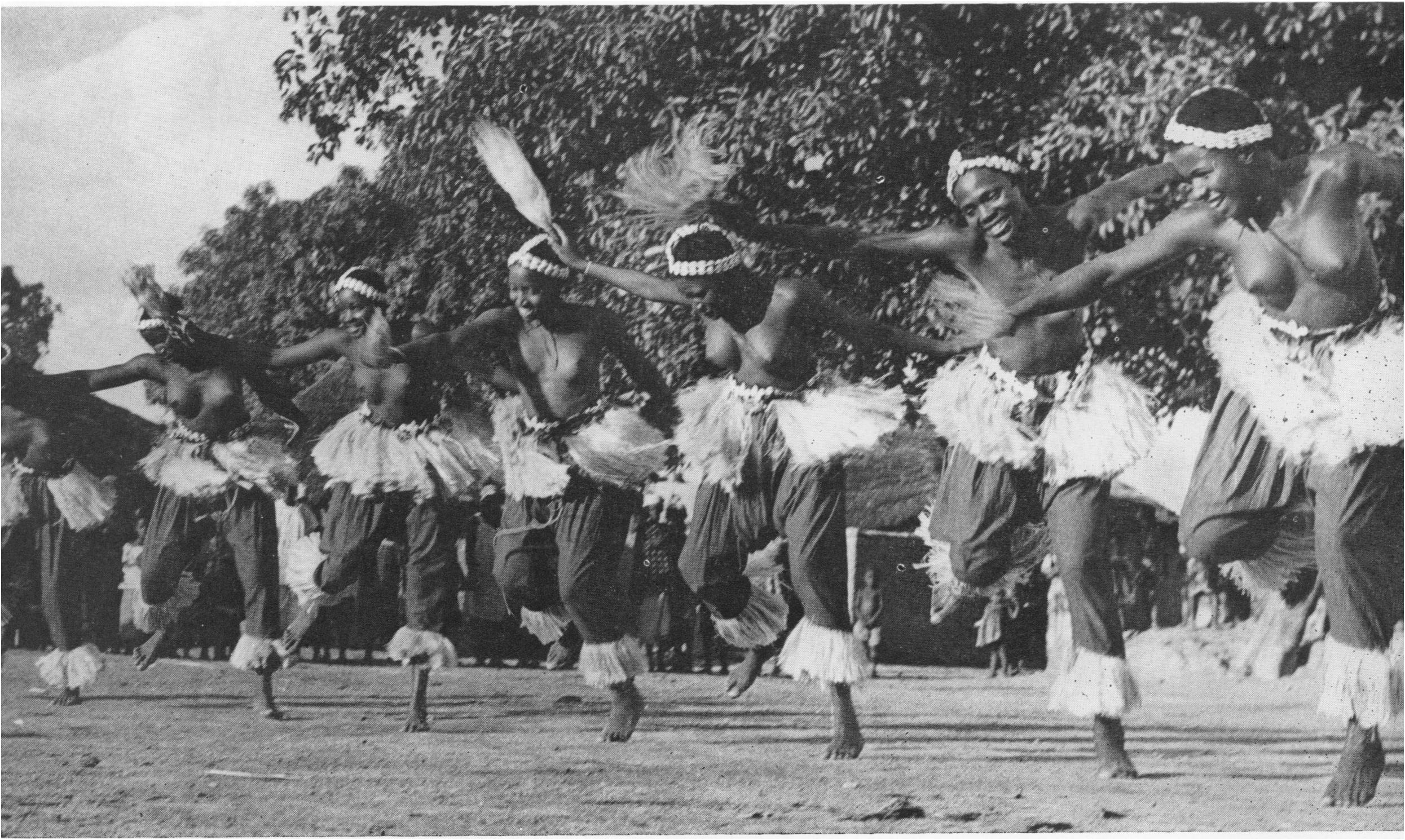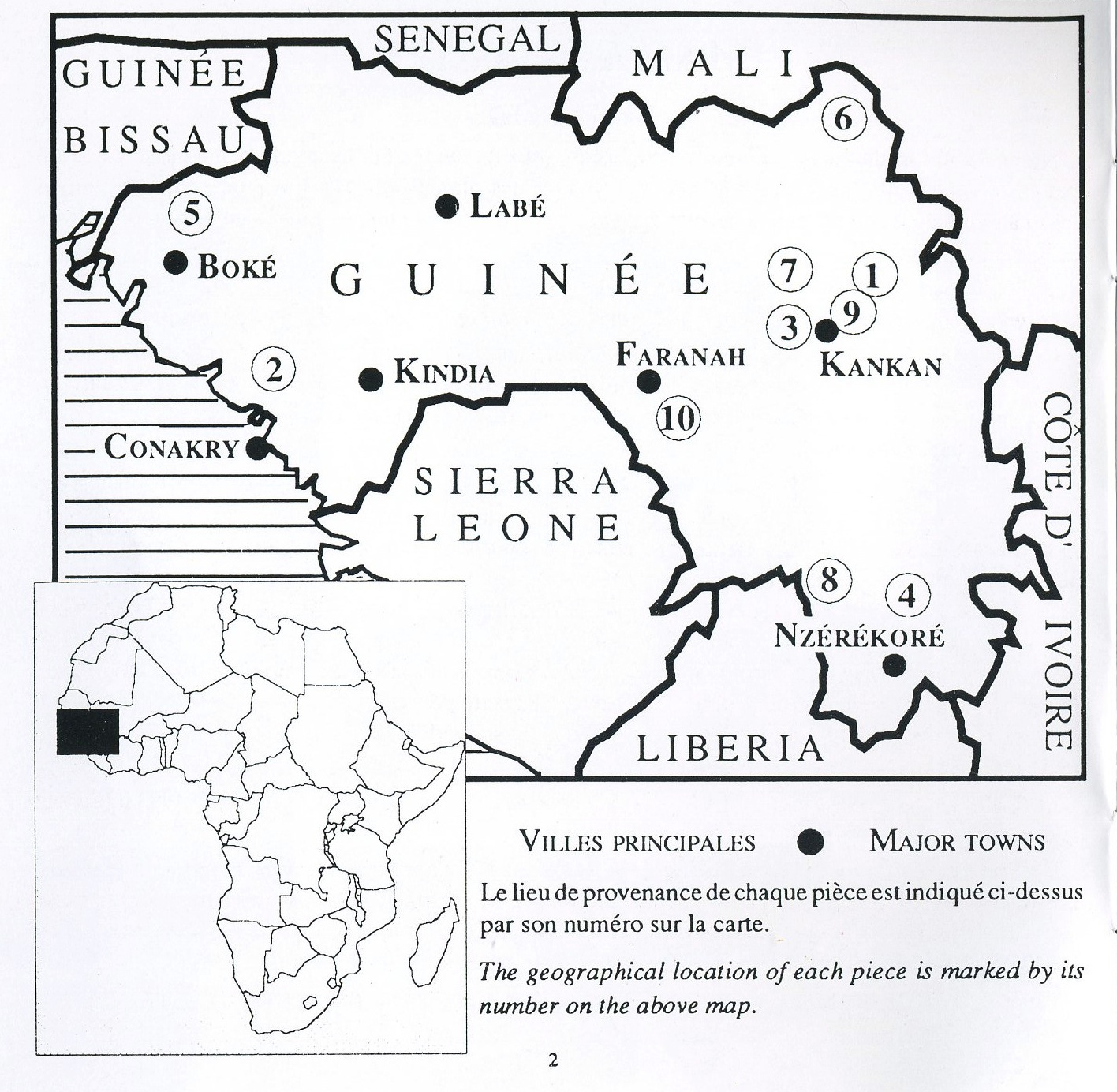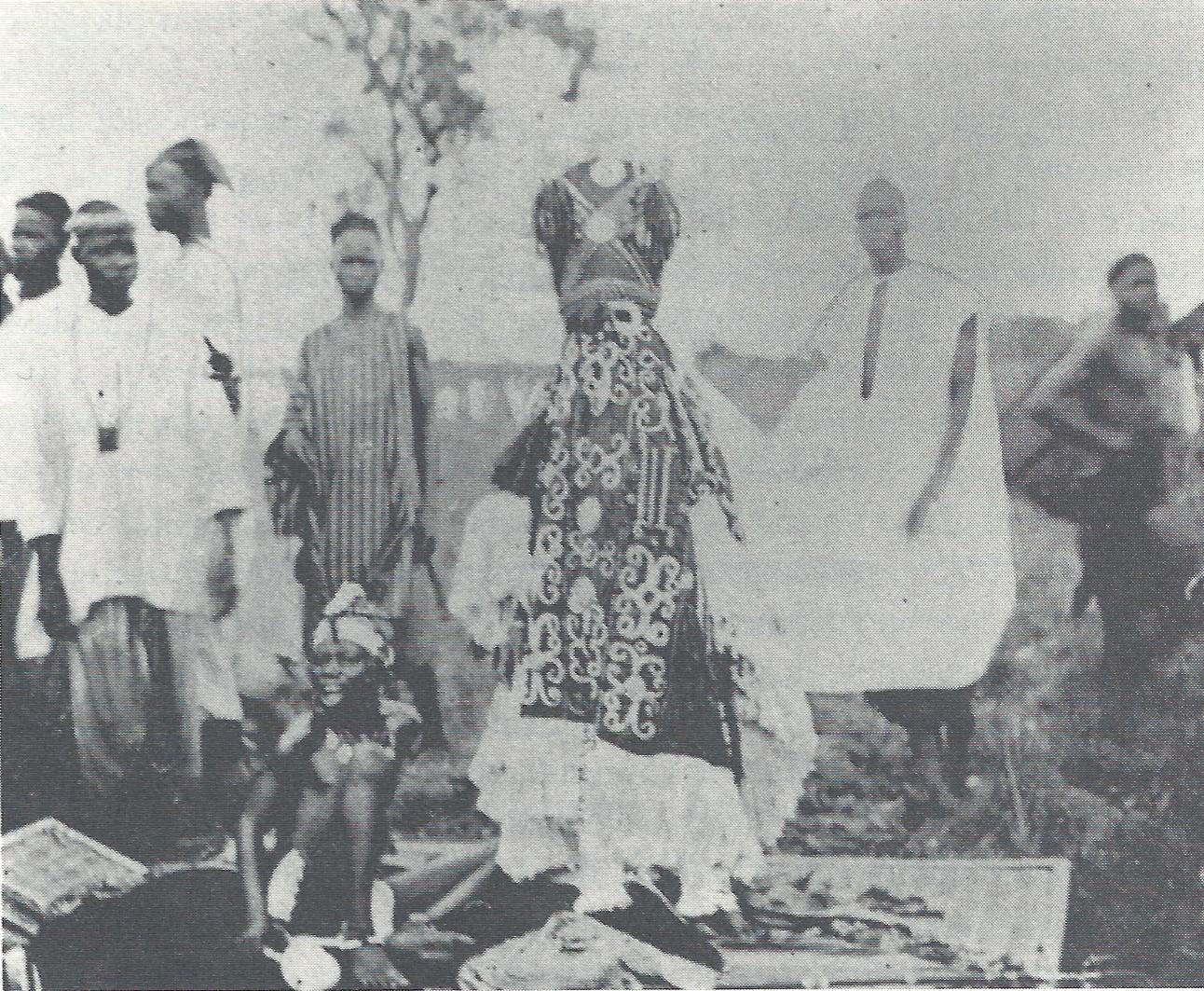manjani
Decock, Jean. 1968. "Pré-Théâtre et Rituel: National Folk Troupe of Mali." African Arts 1 (3): 31-7.
(Mandiani)
p. 33

Mandiani: Malinké danse performed in Mande by young girls during circumcision and marriage ceremonies.
(Mandiani)
p. 215
Chez les Malinkés et les Bambaras, la choréographie et le chant priment. C'est au groupe d'âge qui présente la meilleure danseuse (Mandiani) et la meilleure chanteuse (Kono Mousso) que revient l'honneur de la tournée triomphale à travers le pays.
Kante, Mamadou. 1983. Drums from Mali. Playasound, PLS-65132.
(Mandiani)
Dance performed after harvest in the Kayes region.
Konate, Famoudou. 1991. Rhythmen der Malinke. Staatliche Museen zu Berlin.
(Mendiani)
p. 64
Chaque village a sa mendiani, c'est-à-dire une jeune fille qui maîtrise la danse mendiani. Quand la mendiani devient vieille, il faut lui trouver une jeune remplaçante qui apprendra la danse de la vieille mendiani pendant la nuit, en dehors du village. Lors d'une fête mendiani la danseuse danse seule sur la place du village, pendant qu'une autre jeune fille (lafè) avec une crécelle danse en cercle, loin autout d'elle. Le rythme mendiani peut être joué à diverses occasions.
Rythme: cycle de 24 pulsations, subdivisé en 2 groupes de 12.
Keita, Mamady. 1992. Nankama. Fonti Musicali, FMD 195.
(Mendiani)

Régions: Siguiri, Mandiana, Kouroussa, Kankan. Rythme: Malenke (no. 3 on map.)
Rythme dansé dans les villages malenke par les jeunes filles vierges ayant entre sept et quatorze ans habillées dans un costume particulier. Rythme de réjouissance et d'accueil.
Polak, Rainer, prod. 1997. Dònkili/Call to Dance: Festival Music from Mali. PAN Records, PAN 2060CD.
(Mendiani)
The rhythm is called mendiani. It has been one of the favourite modes in ballet drumming in the 1960s and 1970s.
Billmeier, Uschi. 1999. Mamady Keita: A Life For the Djembe—Traditional Rhythms of the Malinke. Engerda, Germany: Arun-Verlag.
(Mendiani)
Traditional Ethnic Group: Malinke; Northeast Guinea
Mendiani is a rhythm and a dance for the virgins, the young girls from age six to thirteen. One of the older women in the village who was once a Mendiani is considered to be the "mother" of these girls, and the President, or leadere of the village's Mendiani association. She, along with other members of the association, organizes the dances and costumes and advises the girls during this period in their lives. The mother protects the girls, and initiates them into the secrets and mysteries of Mendiani.
Every now and then, younger girls take the place of the older Mendiani. The dance is very acrobatic, and the new Mendiani are trained, psychologically and physically, for it. Mendian festivities are always celebrated during the day. When such a festivity occurs, the girls go to one home, usually that of their "mother," to prepare. From there, they are picked up by young men, who carry them on their shoulders to the center of the village.
Each of the girls wears the Mendiani costume, a big, wide boubou, and a mask. Upon arriving in the village center, they are greeted by the drummers with the rhythm Denadon.
After that, the girls take off their masks and big boubous, the griots begin to sing the Mendiani song, and the percussionists change to the Mendiani rhythm. For several hours, the girls perform their acrobatic dances, for which there are different traditional choreographies. This festivity is still practiced today, in accordance with tradition.
Forè Foté. 1999. Wonberé: Music and Dance in Black and White.
(Mendiani)
Mendiani (often called the, "Dance of the virgins") was originally danced by specially dressed girls between the ages of seven and fourteen.
Williams, B. Michael. 1999. "Mamady Keita's 'Mendiani.'" Percussive Notes 56 (4): 56-61.
(Mendiani)
p. 56
"Mendiani," also known as "Mandiani" or "Manjani," is a social dance of the Malinke people of Guinea and Mali, West Africa.
"Mendiani" has become one of the most popular jembe rhythms among American drumming enthusiasts.
pp. 58-60
(See Williams, 1999.) (Jembe transcription of Mamady Keita, 1992-disc.)
Charry, Eric. 2000. Mande Music: Traditional and Modern Music of the Maninka and Mandinka of Western Africa. Chicago; London: University of Chicago Press.
(Manjani)
p. 199
(See Charry, 2000.) (Table 12 Occasions for Drum and Dance Events.)
pp. 220–21
Taking the examples of Dundunba, Komo, and Manjani (see below), it appears that jembe drumming in serious ritual contexts may have declined by the time of independence.
After Dundunba, the next most widespread jembe pieces are probabaly Manjani (Menjani or Mandiani), from Upper Guinea, and Soli (called Suku in Mali), . . . Manjani is traditionally danced by young girls, but recent descriptions do not go into detail about its village significance, perhaps because the tradition no longer exists. A manjani is the best young female dancer in a village. Ladji Camara (1996-per) describes Fanta Kamissoko, the lead dancer with the original Ballets Africains in the 1950s and wife of guitarist Facelli Kante (see plate 36), as a manjani in Siguiri when she was younger. The earlier documentation of Manjani may be a photograph of a manjani dancer from Upper Guinea published by Joyeux (plate 28) and his extended description (1924, fig. 6 facing 182, 203–5). According to Joyeux (1924:203–5), a mandiani is a young girl chosen for her ability in a dance competition, a tradition local to Upper Guinea. Every village that can support one has a manjani, and if there is a rival political party, they too choose one. They were formerly sorceresses, but by the time of Joyeux's writing their powers had declined. They were fed and cared for by a principal family of the village. All their wants were taken care of, and they had several people constantly at their service. A daughter of a griot was attached to her and accompanied her during her dancing. She remained a manjani until puberty, at which time she returned to the ranks and another was elected in her place (Joyeux 1924:203.)25
25. Famoudou Konate (1991-disc:64) also indicates that the manjani dances by herself while another young girl dances in a circle around her, perhaps referring to what Joyeux calls the daughter of a griot.

Plate 28 Early twentieth-century Manjani dancer from Upper Guinea. From Joyeux (1924, fig.6).
Keita, Mamady. 2000. Balandugu Kan. Fonti Musicali, FMD 218.
(Mendiani)
The word Mendiani means the costume worn by a young virgin between seven and twelve as well as the girl herself. It is a symbol of purity.
| Samabaanidee eya e samabaanidee baralabilali ikelen yee | When the rainy season is over, the whole place is yours! |
| Naoo n'nasira diananden | Come, dear child of Nansira (Mamady's mother.) |
| Sangbalima naoo dugnabidi ikolamen | Thunder, come, the whole world has heard your name. |
Conde, Moussa "Bolokada." 2005. Morowaya. Abaraka Music, 107130.
(Mendiani)
Mendiani is a young girl that is chosen by the young village to dance Mendiani for them. The villagers will give clothes and food to her, and in return she will dance for the village. When a village is having a celebration there will be a Mendiani representing for every village that comes. When the Mendiani is married, she stops having to dance and resumes a normal life. A new Mendiani will then be elected and the old Mendiani will apprentice the newly elected.
E yeye ma Yerduna
YeYe Ma E YeYe Ma Yerduna Yeyema
Yeyema (a girls [sic] name) is dancing
Yeyema dances strong and good
Oulare, Fadouba. 2008. Fadouba Oulare. Abaraka Music.
(Mendiani)
Played at all gatherings in Sankaran, Guinea. Traditionally a circumcision rhythm.
| "Denna dia ni nday allo ye ballamo la denima. Eh Assa inya macca don bar woulilo denna dia ni nday na deinday Assa. Denna dia nday ntodama a te inde la walila." | We have a girl, Assa, a mendiani dancer that everyone loves. Assa dances fro [sic] everybody. Don't do bad things to Assa. If you do bad things to Assa, everyone will be mad at you because everyone loves Assa. |
(Manjanin)
"Manjanin" (also spelled mandiani or mendiani) is a classic among Maninka jenbe rhythms. It is traditionally performed for the dance of two girls of pre-marriage age, who are chosen for the role of the manjanin—a kind of "village princess" and her "servant"—for a period of time. Many parts of the dance are extremely fast, and some are acrobatic: the girls dance on the shoulders of strong men who also throw them in the air. While there a [sic] reports that in the past manjanin used to be a secret, ritual art form associated with magic, historical photographs from Bamako and other colonial centers show that is was performed publicly as a folkloristic genre of cultural represtentation [sic] of the Maninka ethnic group as early as in the first decade of the 20th century. In the 1960's, manjanin developed into one of the most popular genres of the jenbe-based National Ballets of Guinea and Mali. The way manjanin is played in Bamako was established by Daba "Manjanin" Keita, a Guinean born in the region of Siguiri in the 1920s. Daba, together with Ladji Camara, had been among the very first players in Fodeba Keita's legendary Ballets Africains (later transformed into Ballet National de la République de Guinée) in the early 1950s. In 1956, after disputes within the Ballets, Daba left Conakry and established himself in Bamako. First, he accompanied griot singers and guitarists as a kind of all-round percussionist, yet when the jenbe began to boom in the 1960s, Daba was among the pioneers who took the lead in creating an urban style of playing, and in new forms of professional organization. In particular, Daba was the first to found a private ballet troupe—Le Ballet Mandiani—which successfuly toured Mali and neighbouring countries throughout the 1960s. Daba's jenbe solist [sic] was Fasiriman Keita who, after Daba's untimely death in 1971, chose to work with the then most successful jenbe player of Bamako, Yamadu Dunbia. Drissa Kone presents a classic version of playing Bamako style manjanin—that is to say, Daba's style—which he mastered through decades of learning from and performing with Fasiriman Keita and Yamadu Dunbia.
Rakha, Vijay, dir. 2008. M'Bemba Fakoli: A Musical Journey Through Guinea, West Africa. Abaraka Music.
(Mendiani)
In the village of Mernah, one will see the dance called Mendiani—also refered to as Bunjani.* Mendiani is the name of the dance as well as the secret society of women who dance it. Outside the village, elder Mendiani dancers teach pre-adolescent girls the secrets of the Mendiani dance. Once the dancers come of age, they pass on the training of the Mendiani to the next Mendiani dancer. Mendiani can be performed for a variety of reasons such as to greet a special guest, celebrate a wedding, a good harvest, or a full moon.
* Transcription mine.
Delbanco, Åge. 2012. West African Rhythms. Charleston, SC: Seven Hawk.
(Mendiani)
Malinke rhythm from Upper Guinea; dance for young girls.
see also:
Sunkett, Mark. 1995. Mandiani Drum and Dance: Djimbe Performance and Black Aesthetics from Africa to the New World. Tempe, Ariz.: White Cliffs Media.
———. 1998. Mandiani Drum and Dance: A Journey to the Drum Culture of Senegal. Gilsum, N.H.: White Cliffs Media.